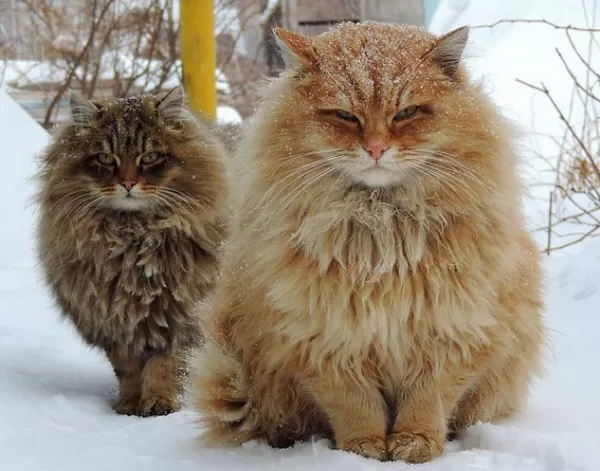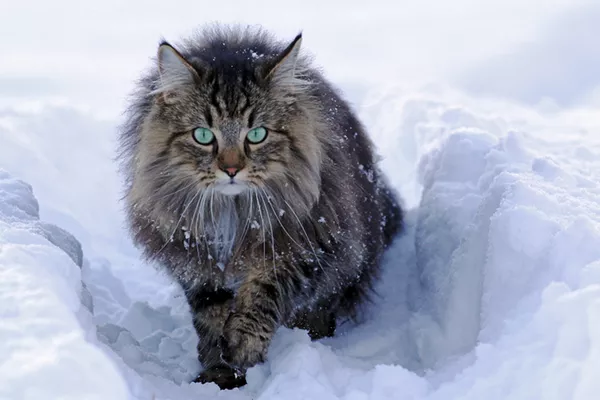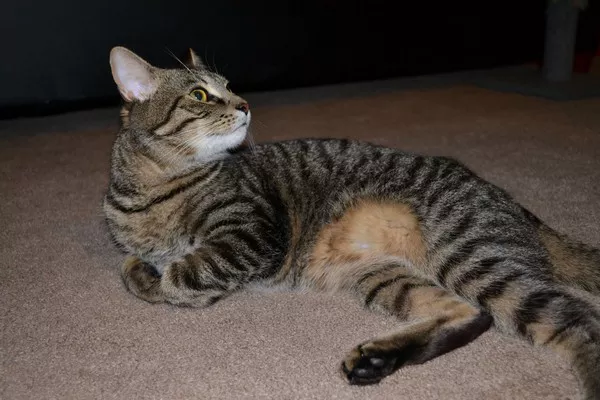Norwegian Forest Cats, with their majestic appearance and playful demeanor, have captured the hearts of cat enthusiasts around the world. Renowned for their striking beauty and rugged charm, these feline companions are often praised for their intelligence and problem-solving skills. In this comprehensive guide, we’ll delve into the cognitive abilities of Norwegian Forest Cats, debunking myths and shedding light on their remarkable intelligence.
Introduction to Norwegian Forest Cats
Before exploring the intelligence of Norwegian Forest Cats, let’s delve into some key characteristics of this beloved breed:
1. Origin and History:
Norwegian Forest Cats, or “Wegies” as they are affectionately known, are a natural breed that originated in Norway. They are believed to have roamed the forests of Scandinavia for centuries, evolving to adapt to their rugged environment.
2. Physical Characteristics:
Norwegian Forest Cats are known for their robust build, thick double coat, tufted ears, and bushy tail. They have a wild appearance reminiscent of their ancestors, with strong, muscular bodies and expressive eyes that reflect their intelligence and curiosity.
3. Temperament and Personality:
Norwegian Forest Cats are intelligent, independent, and highly adaptable animals. They are known for their gentle and affectionate nature, forming strong bonds with their human companions. Despite their rugged exterior, Norwegian Forest Cats are often described as “gentle giants” for their loving demeanor and playful antics.
Debunking Myths About Norwegian Forest Cat Intelligence
Before delving into the intelligence of Norwegian Forest Cats, let’s dispel some common myths and misconceptions:
1. Myth: Norwegian Forest Cats are primitive and less intelligent than other breeds.
Reality: Norwegian Forest Cats are highly intelligent animals with keen problem-solving skills. Their ability to adapt to their natural environment and navigate complex situations is a testament to their intelligence and cognitive abilities.
2. Myth: Norwegian Forest Cats are aloof and independent.
Reality: While Norwegian Forest Cats may have an independent streak, they are also social creatures that enjoy interacting with their human companions. They form strong bonds with their owners and thrive on attention and affection.
3. Myth: Norwegian Forest Cats are difficult to train due to their wild ancestry.
Reality: Norwegian Forest Cats are intelligent and trainable animals that can learn a variety of tricks and behaviors with patience and positive reinforcement. They enjoy mental stimulation and can excel in activities such as puzzle toys, clicker training, and agility courses.
Understanding the Intelligence of Norwegian Forest Cats
Now that we’ve dispelled some myths about Norwegian Forest Cat intelligence, let’s explore the factors that contribute to their remarkable cognitive abilities:
1. Problem-Solving Skills:
Norwegian Forest Cats are natural problem solvers, thanks to their keen observational skills and sharp instincts. They excel at figuring out how to access high places, open doors, and manipulate objects to get what they want. Their intelligence and resourcefulness make them adept hunters and explorers in their natural environment.
2. Curiosity and Exploration:
Norwegian Forest Cats are curious and adventurous animals that enjoy exploring their surroundings and investigating new sights, sounds, and smells. Their inquisitive nature drives them to seek out novel experiences and engage in activities that stimulate their minds and satisfy their natural instincts.
3. Adaptability and Learning Ability:
Norwegian Forest Cats are highly adaptable animals that can quickly learn and adjust to new environments and situations. They are receptive to training and can easily pick up new skills and behaviors with consistent and positive reinforcement. Their ability to learn and adapt makes them versatile companions that thrive in a variety of settings.
Nurturing the Intelligence of Norwegian Forest Cats
To nurture the intelligence of Norwegian Forest Cats and provide them with opportunities for mental stimulation and enrichment, consider the following tips:
1. Interactive Toys and Puzzle Games:
Provide Norwegian Forest Cats with interactive toys, puzzle games, and enrichment activities that challenge their problem-solving skills and engage their natural curiosity. Toys that dispense treats or require manipulation to access rewards are particularly effective at stimulating their minds and keeping them entertained.
2. Environmental Enrichment:
Create an enriched environment for Norwegian Forest Cats that offers opportunities for exploration, climbing, and sensory stimulation. Install cat trees, shelves, and perches for them to climb and explore, and provide hiding spots and cozy retreats where they can relax and observe their surroundings.
3. Ongoing Training and Positive Reinforcement:
Continue to engage Norwegian Forest Cats in ongoing training and positive reinforcement to reinforce desired behaviors and encourage mental stimulation. Use rewards such as treats, praise, and playtime to motivate and reward them for their efforts, and be patient and consistent in your training approach.
Conclusion: Celebrating the Intelligence of Norwegian Forest Cats
In conclusion, Norwegian Forest Cats are intelligent and adaptable animals with remarkable cognitive abilities. Despite common myths and misconceptions, these feline companions are highly trainable, curious, and resourceful creatures that thrive on mental stimulation and enrichment. By understanding and nurturing their intelligence through interactive toys, environmental enrichment, and ongoing training, owners can celebrate the remarkable cognitive abilities of Norwegian Forest Cats and enjoy a deep and fulfilling bond with these beloved companions.
FAQs:
1. What is special about Norwegian Forest Cat?
The Norwegian Forest Cat is renowned for its striking appearance and fascinating history. Originating in Norway, this breed boasts a dense, water-resistant double coat, tufted ears, and a bushy tail, all adaptations for survival in harsh Nordic climates. With their robust build and agile nature, Norwegian Forest Cats are skilled climbers and hunters, embodying traits reminiscent of their wild ancestors. Their affectionate and playful demeanor, coupled with their stunning appearance, has earned them a devoted following worldwide, making them cherished companions for those seeking a unique and intelligent feline friend.
2. What are the disadvantages of a Norwegian Forest Cat?
Despite their many admirable qualities, Norwegian Forest Cats come with a few potential disadvantages. Their luxurious double coat requires regular grooming to prevent matting and tangles, which can be time-consuming. Additionally, their strong hunting instincts may lead to them bringing prey indoors, potentially causing distress for both the cat and its human companions. Furthermore, their independent nature means they may not always crave constant attention, making them better suited for households where they can entertain themselves for periods of time.
3. Do Norwegian Forest Cats like to be picked up?
Norwegian Forest Cats, known for their independent streak, may not always appreciate being picked up. While individual preferences vary, many of these cats prefer to maintain control over their movements and may feel uncomfortable or insecure when lifted off the ground. However, with patient and gentle handling from an early age, some Norwegian Forest Cats may tolerate being picked up for short periods, especially if they associate the experience with positive interactions and rewards. Understanding and respecting your cat’s preferences is key to fostering a trusting and harmonious relationship.


























